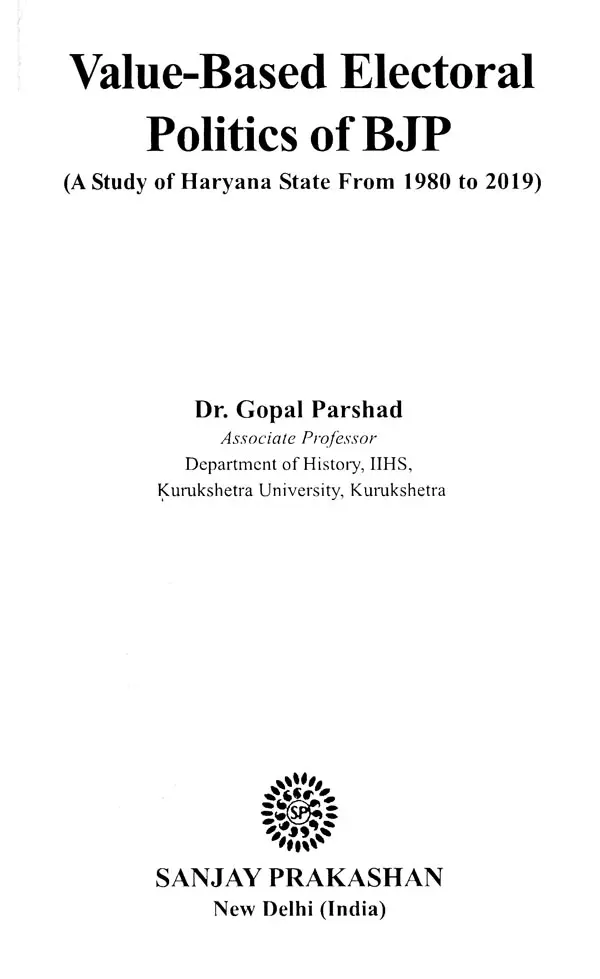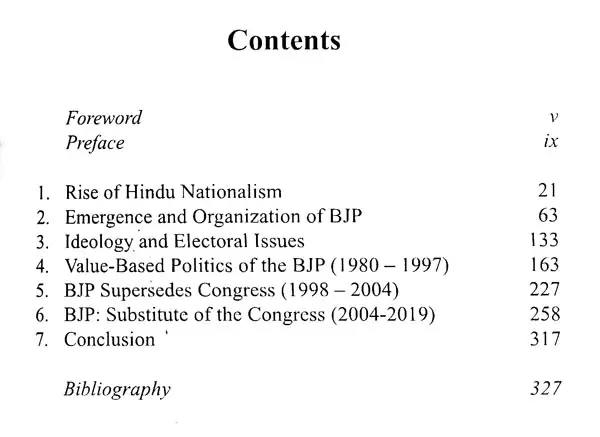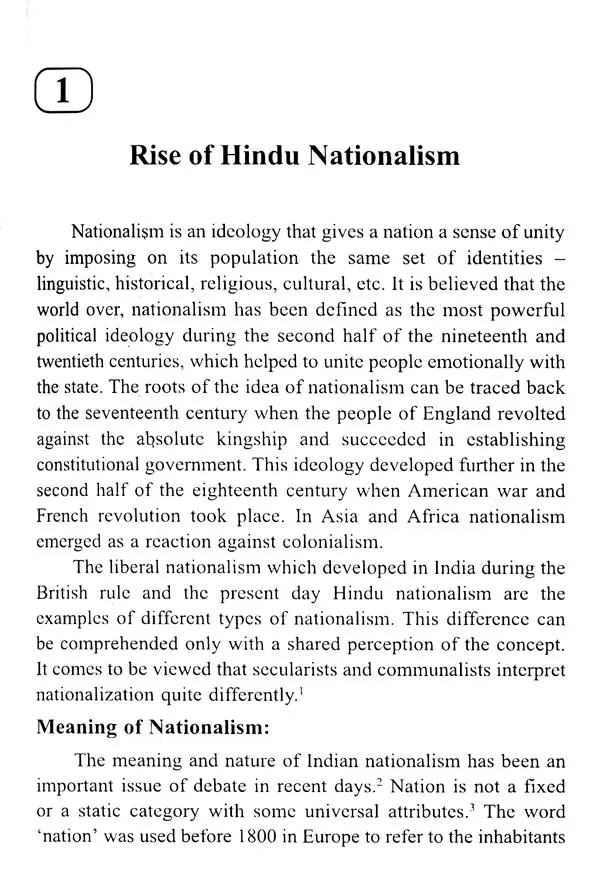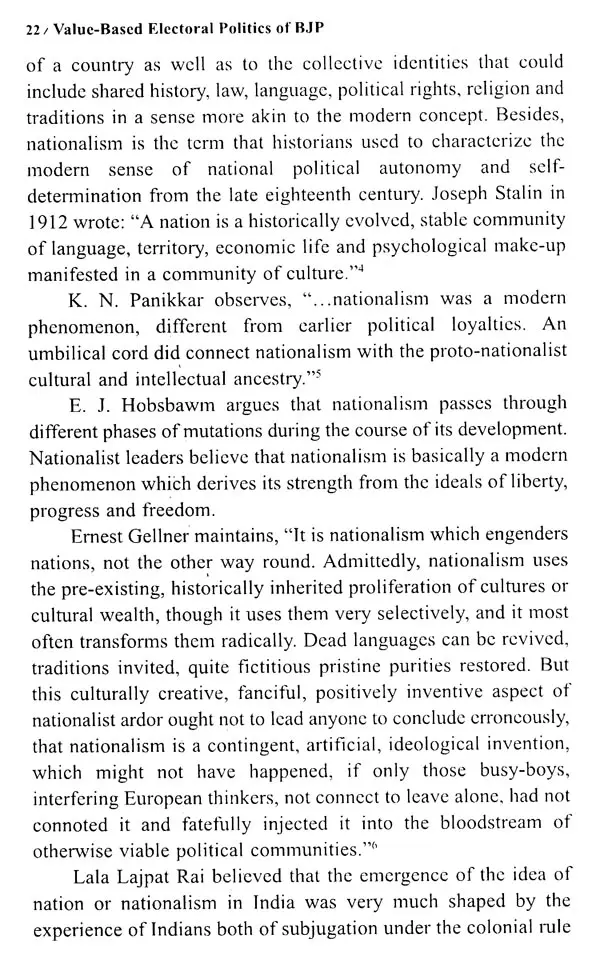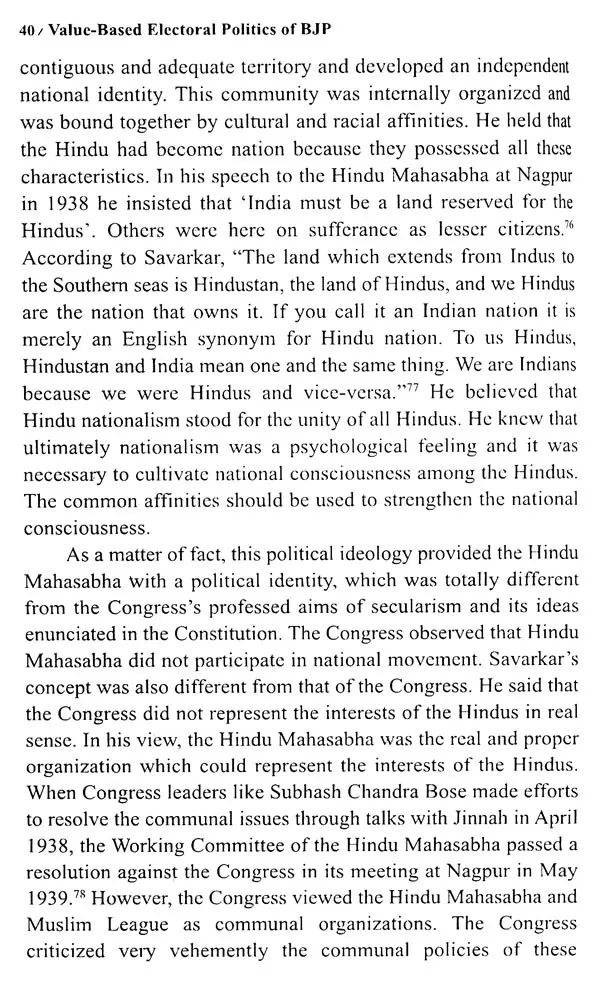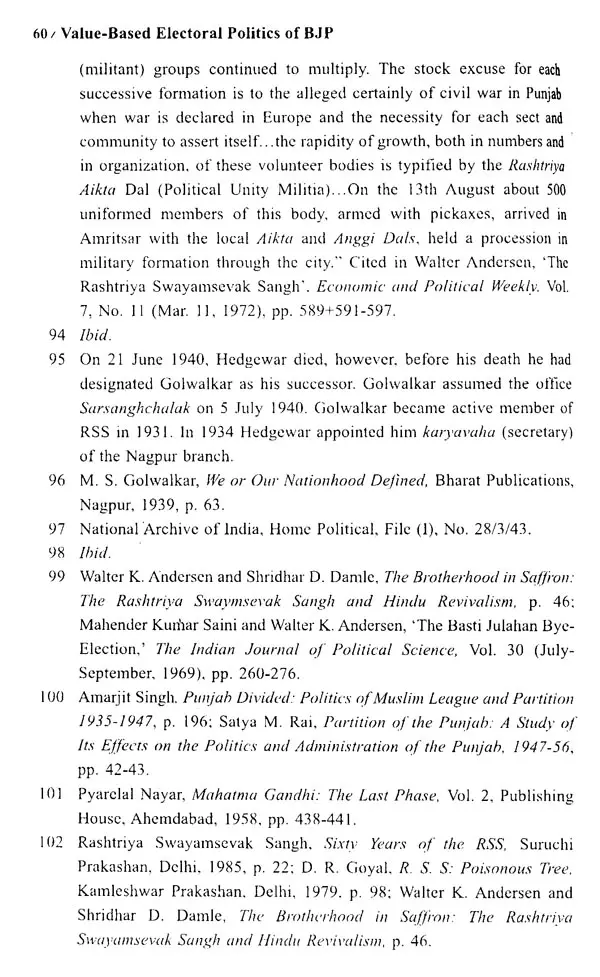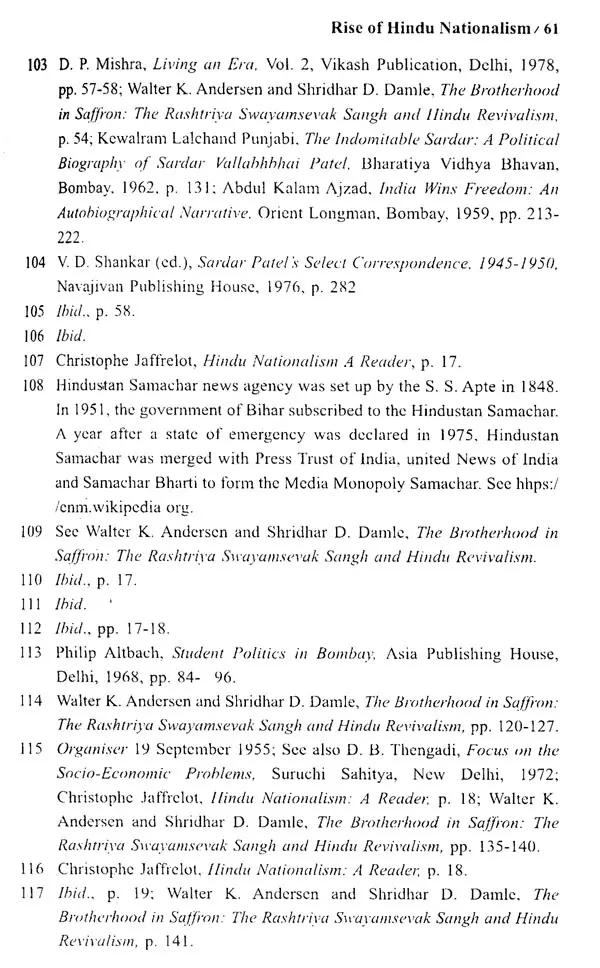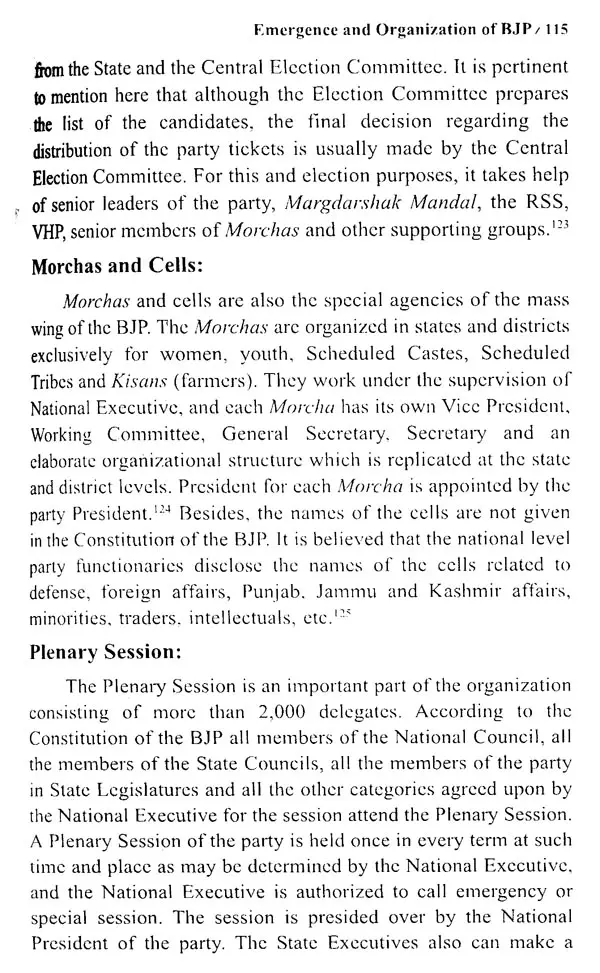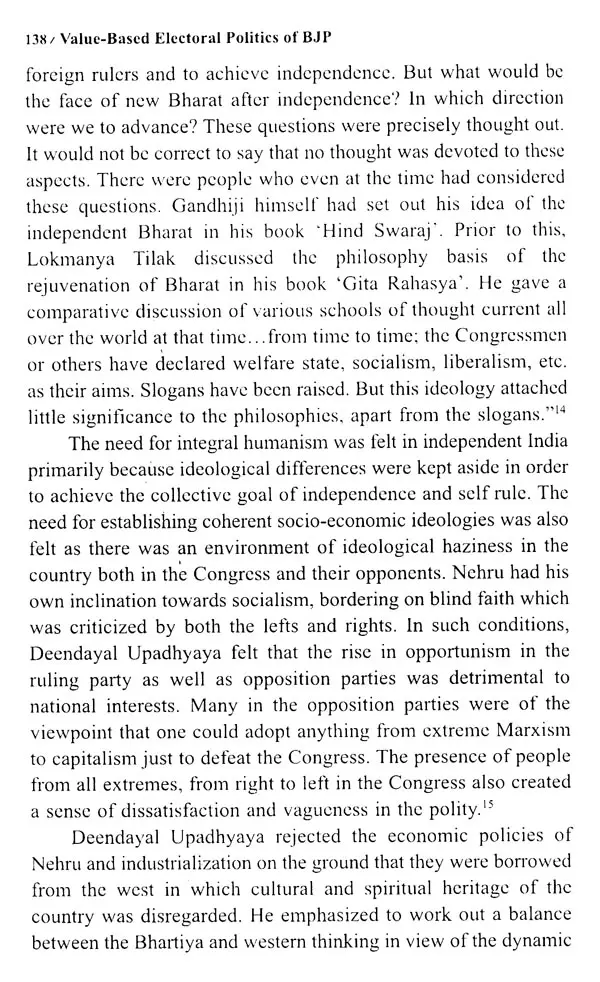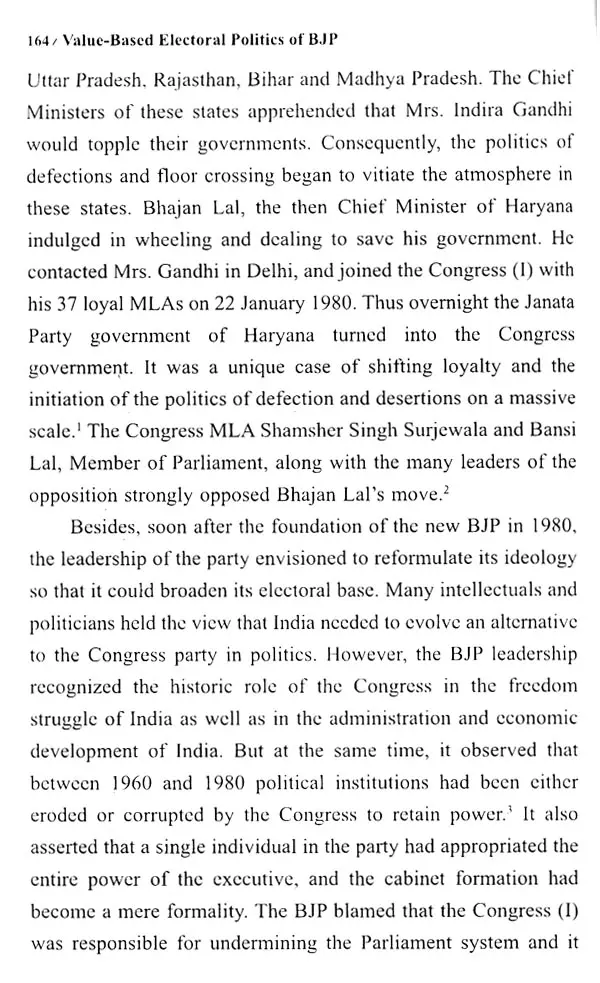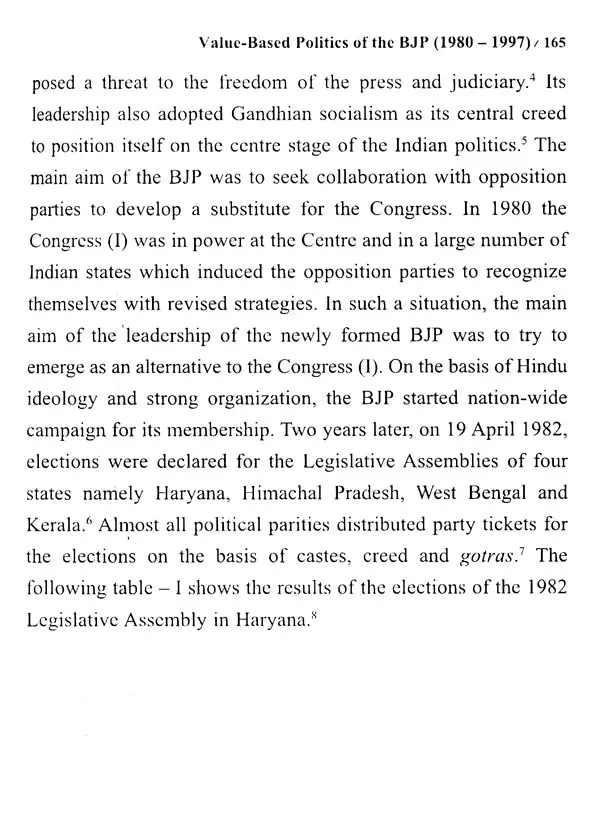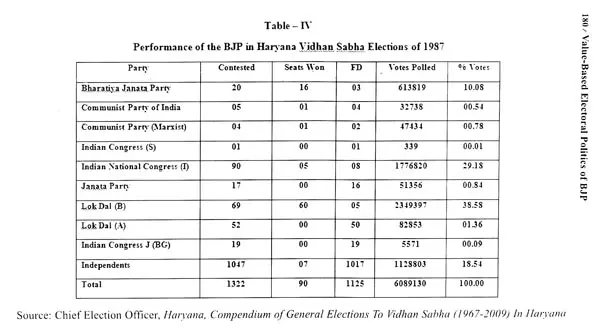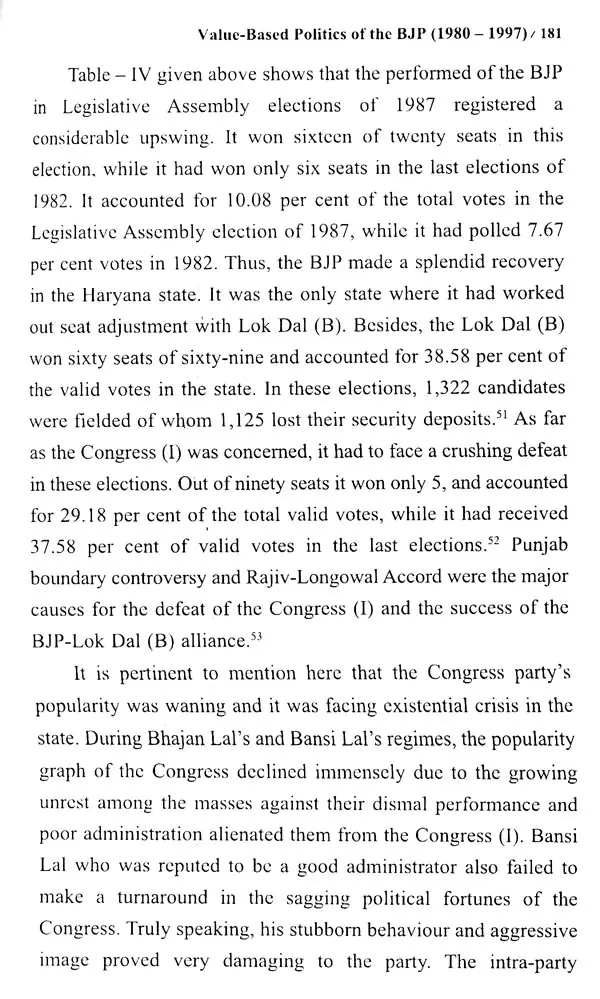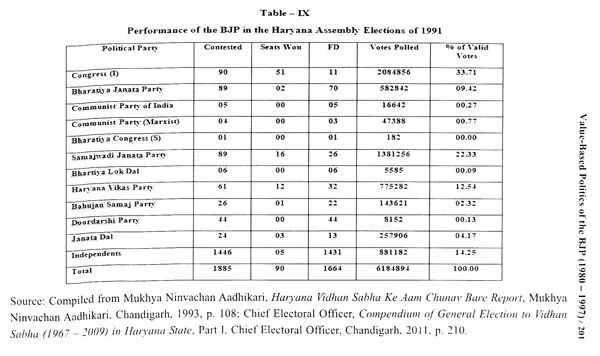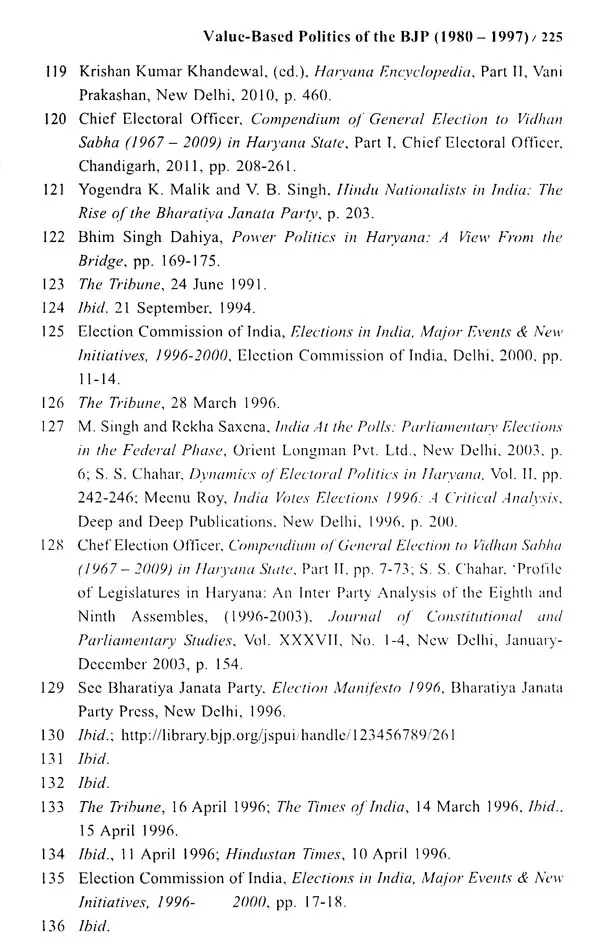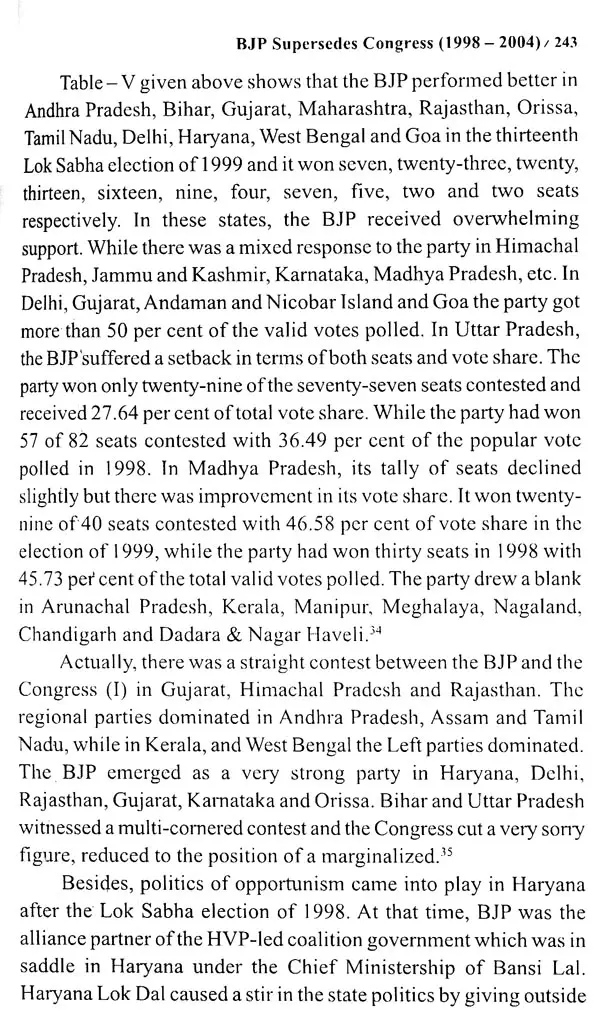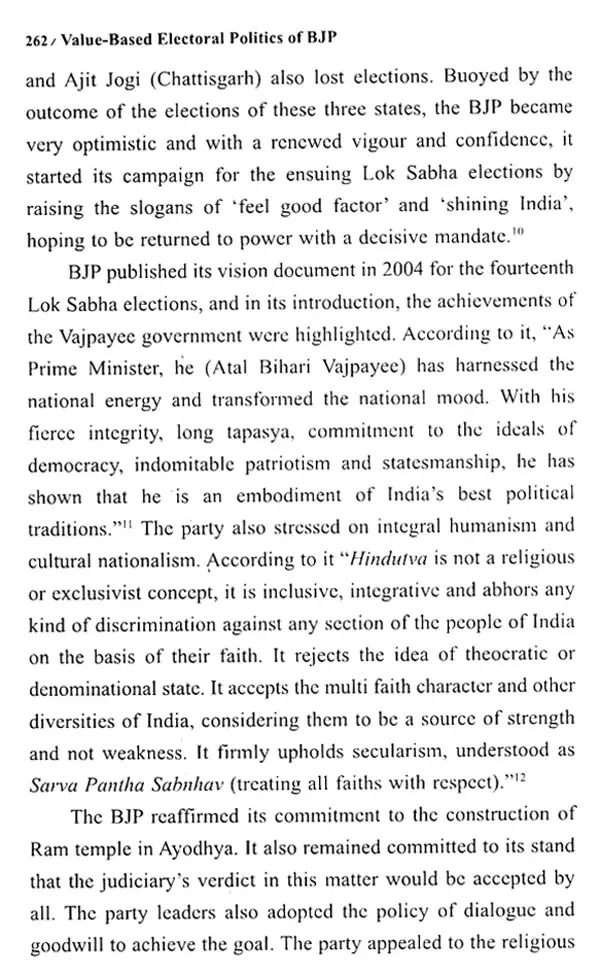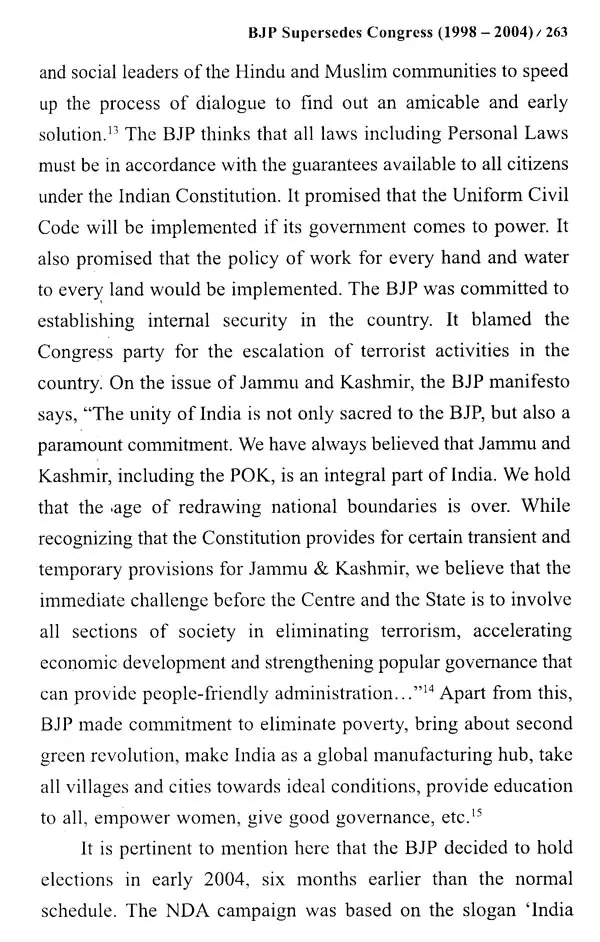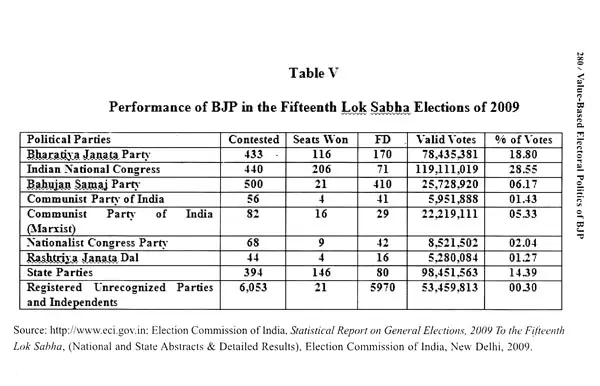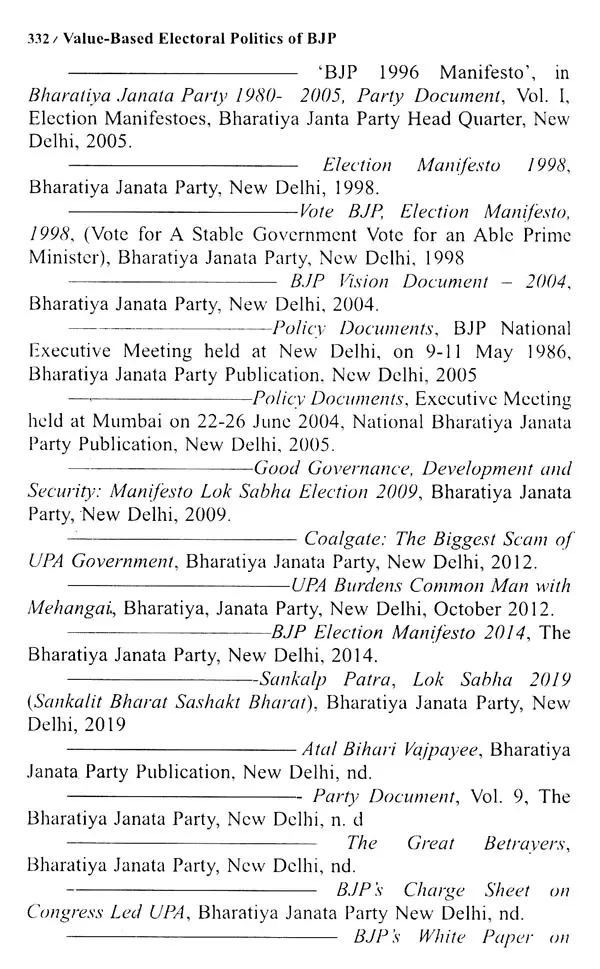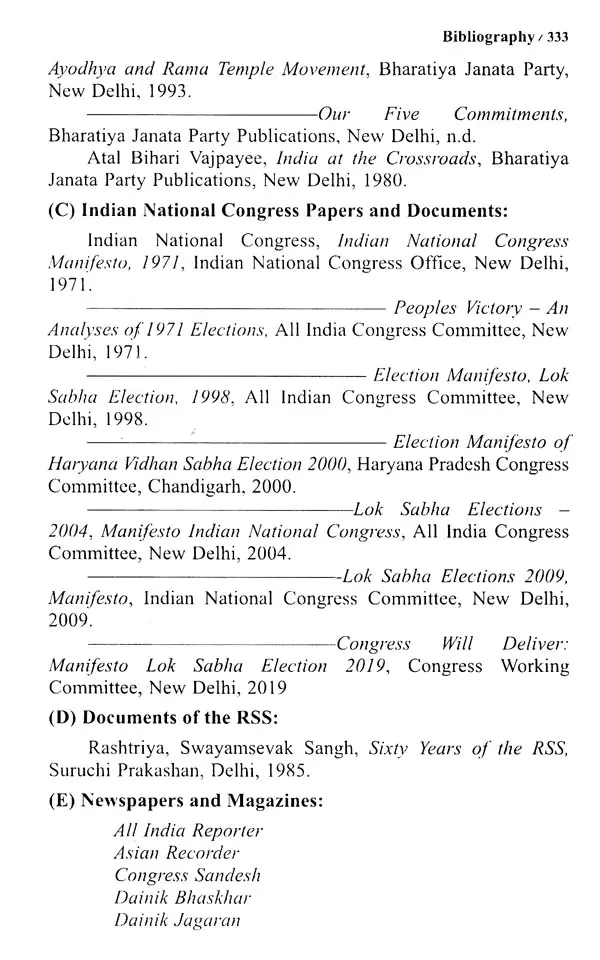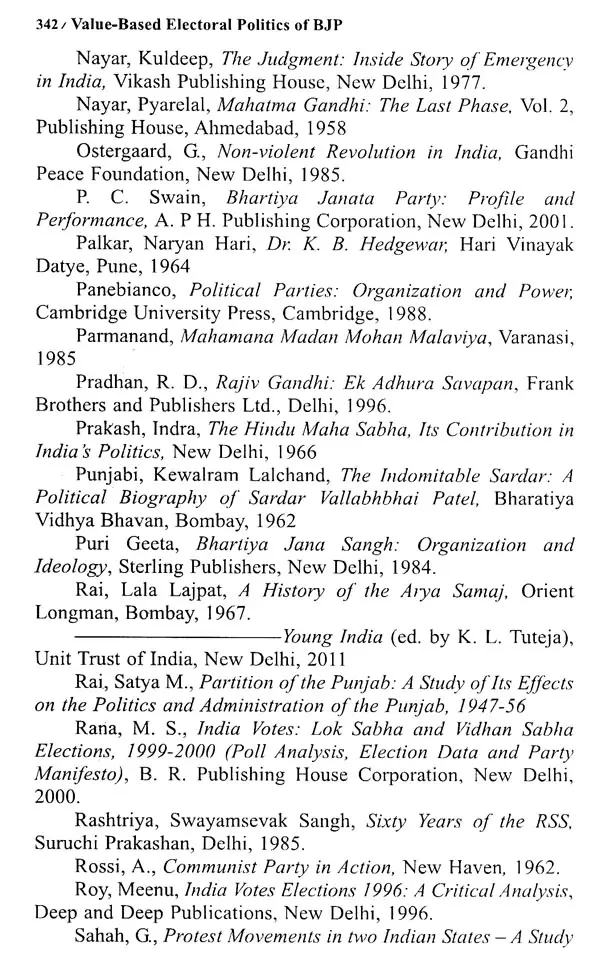
Value-Based Electoral Politics of BJP
Book Specification
| Item Code: | UAH933 |
| Author: | Gopal Parshad |
| Publisher: | Sanjay Prakashan |
| Language: | English |
| Edition: | 2020 |
| ISBN: | 9789388107761 |
| Pages: | 344 |
| Cover: | HARDCOVER |
| Other Details | 9.00 X 6.00 inch |
| Weight | 580 gm |
Book Description
The emergence of Bharatiya Janata Party (BJP) in 1980 as a major contender for political power in India has generated considerable interest in its ideology, electoral politics, political power and leadership. It has firm and unequivocal belief in Hindutva, internal humanism and national integration, positive secularism and value-based politics. It defines secularism as 'Dharma Nirpeksha' and 'Servadharma Samabhava' .
From its rise as an insignificant political power in 1982, when it had won only six seats in Haryana Legislative Assembly and won 2 seats at all-India level in the General elections of the Lok Sabha in 1984; its sudden rise in 1989 as the country's second largest party, the BJP has given a major challenge to the Congress. However, in Haryana it has faced tough competition from the Congress and regional parties. In 1996, the BJP captured 161 Lok Sabha seats and the party formed the government under Atal Bihari Vajpayee, but his government collapsed just after thirteen days, because of the party's value-based politics he could not win the trust vote in the house. Due to the massive support of the RSS, the BJP succeeded in winning 179 of 381 Parliamentary seats contested in 1998 with 25.29 per cent of votes. But, it won only one Lok Sabha seat in Haryana. The BJP again formed a coalition government at the Centre, but it collapsed by only one vote when it had to seek the vote of confidence of the house on 17 April 1998. However, it returned to power in 1999 and completed its full tenure of five years under the Prime Ministerial Bihari Vajpayee.
The BJP was able to reinvent itself when it registered a massive victory securing 282 Lok Sabha seats in the 2014 General Lok Sabha elections under the leadership of Narendra Modi. During the election campaign, Modi and Amit Shah raised such slogans as 'achche din aane wale haf,'sab ka saath sabka vikas', etc. As a result, the BJP was able to leapfrogging to its current position of the ruling the country with a massive mandate. All this forms an interesting electoral narrative interspersed with the huge vicissitudes, which constitutes the heart of this study. The BJP formed its governments both at the Centre and in the Haryana State. People were satisfied and pleased with the charismatic leadership of the Prime Minister Modi and the various developmental projects and programs initiated by him during his five-year term. His foreign policy and his emphasis on wiping out terrorism and corruption also brightened the image of the party considerably. That is why it was returned to power with a massive and much better mandate, represented by a score of 303 Lok Sabha seats. Thus the BJP has consolidated its position in an amazing way, and has decimated Congress by inflicting a humiliating electoral drubbing on it. The elections to the Haryana Legislative Assembly were held on 21 October 2019 and the performance of the BJP though not as good as it was in the 2014 Assembly elections, yet it was able to retain its government in Haryana state.
Moreover, 14 books of History for undergraduate classes and 23 research articles published in national and international journals also flowed from his pen. His active participation in national and international conferences is also evidenced by his 38 research papers presented by him. His multifarious interest in various academic and other important activities is also reinforced by the' fact that he has organized a number of seminars, workshops, conferences and quiz competitions. He has also chaired and co-chaired the various sessions of national and international conferences. He is also the member of Indian History Congress and Punjab History Conference. His name figures on the panels of various committees of the University such as U. G. and P. G. Board of Studies, Inspection Committee, Observer, Selection Committee, Unfair Means Committee, and Complaint Committee.
The Bharatiya Janata Party, formed in 1980, is one of the main political parties of India which is actively playing a significant role in the growth of electoral politics and democracy of the country. Guided by the ideologies of V. D. Savarkar, the concept of integral humanism of Deendayal Upadhyaya and socialism of Mahatma Gandhi, and it has formulated socio-cultural and developmental strategies for the nation and tries to implement its policies by adopting consensual approach. The BJP defines secularismas 'dharamnirpeksha' and 'sarvadharama samabhava' and it also reaffirms its commitment to the establishment of a progressive social order on the ideals of equality, equity, compassion, cooperation, social justice, social harmony, gender justice, antyodaya (the rise of the last people), 'sarva janah sukhino bhavantu' (Mayall be happy), protection of the environment: preservation of family and social values, and the all- around development of the potential inherent in every individual.
Its ideology has found wide-ranging resonance among the masses.
That is why the party has mustered up tremendous support from the cross-sections of the society spanning the length and breadth of the country. The BJP had a lands idea victory in the 2014 elections Winning 282 seats out of 543 Lok Sabha seats. No other political party has secured absolute mandate to be able to form the government on its own since 1989. So the BJP's victory in 2014 was. record-breaking and unprecedented, ushering in a new era in the electoral history of the country. It replicated its performance with higher number of seats in the 2019 Lok Sabha elections also, signaling its growing popularity and strengthening hold over Indian politics. As of now this party seems invincible and all the opposition parties are decimated and in utter disarray.
However, these works do not deal with the period and the region in question. Moreover, S. S. Chahar's book Dynamics of Electoral Politics in Haryana (2004) and Bhim Singh Dahiya's Power Politics in Haryana: A View From the Bridge (2008) also do not deal with the period and the thrust area in question. Hence, the present study is a modest endeavour to bridge this existing gap. The region of the present day Haryana State is situated in the north-western parts of India between latitude 27° 28' and 30° 55' north and longitude 74° 28' to 77° 36' east. It is bounded by Punjab and Himachal Pradesh in the north, by Uttar Pradesh in the east, separated by the river Jamuna (Yamuna) and by Rajasthan in the south-west. Delhi, the national capital of India, touches the state conspicuously at the south-east edge just on the western bank of the river Jamuna. Present day Haryana is a small progressive state with an area of 44,212 square kilometers.
The roots of Hindu nationalism in Haryana are invariably traced to the Hindu revivalism which emerged in the second half of the nineteenth century and also influenced the growth of Indian nationalism. It is evident that many Congressmen were deeply influenced by the Hindu revivalism represented by Swami Dayananda Saraswati, Swami Vivekananda, etc., and their political thinking and even their nationalist ideology did not remain unaffected by the emerging Hindu revivalist trends.
Especially, the revivalism of the Arya Samaj played an important role not only in demarcating the specific religious character of 'Hinduism but also heightened a sense of pride among the Hindus.
According to Swami Dayananda Saraswati, Hinduism based on the Vedas, is the only religion with universal application. The revivalism of Arya Samaj appealed to the middle class. The reformed version of Hinduism was further reinforced by the Swami Vivekananda who founded Ram Krishan Mission. In fact, Swami Dayananda Saraswati and Vivekananda believed in social and religious harmony. Vivekananda believed that Hinduism is the mother of all religions which had taught the lesson of mankind and tolerance to the world.
Newly emerging Hindu middle classes during the British rule also emphasized the social, economic and political freedom for the citizens. They sought to reform the inherited religious traditions in view of new norms of rationality, justice and progress which accorded with their class aspirations. In such changed circumstances, a number of Hindu outfits were established in north India including Punjab and Haryana.
Book's Contents and Sample Pages
